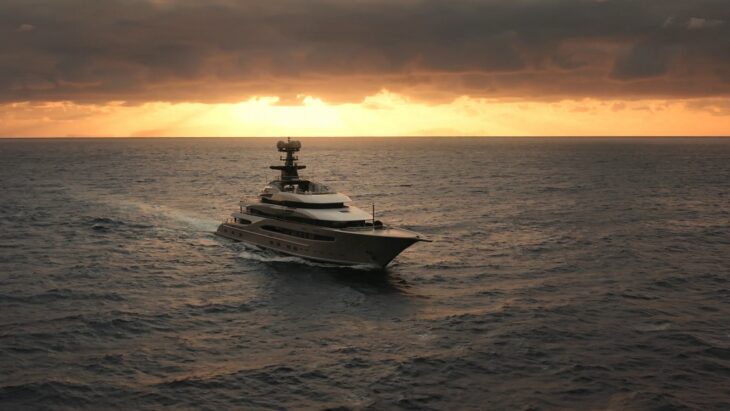When people think of hobbies, they imagine simple pleasures—gardening, painting, and reading. But in the world of the ultra-wealthy, hobbies take on an entirely different meaning. They become statements of wealth, power, and exclusivity.
These activities are not just about enjoyment; they often involve millions in annual expenses, private networks, and assets that appreciate like fine art or real estate.
According to the 2024 UBS Billionaire Census, the number of billionaires worldwide has reached 2,905, and their collective wealth is over $13.7 trillion. Many of them channel a portion of their fortunes into personal pursuits that are inaccessible to 99.99% of the population.
These hobbies aren’t just expensive—they are often used as vehicles for investment, tax strategies, legacy building, and social positioning.
1. Collecting Rare Art
Collecting fine art is one of the oldest and most respected hobbies of the ultra-rich. It combines passion, cultural capital, and significant financial investment. Elite collectors often focus on works from renowned artists such as Rothko, Warhol, Basquiat, Monet, and Picasso.
Art collecting also offers tax advantages when art is stored in freeports or donated to museums. Top collectors build entire investment portfolios around their acquisitions.
To participate in this world, one must spend millions, not just on artwork, but on insurance, transportation, legal authentication, and long-term storage. Many collectors also fund private curators and art consultants.
| Art-Related Cost | Typical Price Range |
| Blue-chip painting (Basquiat, etc.) | $10 million – $100+ million |
| Storage in Art Freeport (Geneva, Singapore) | $25,000 – $100,000+ per year |
| Auction house buyer’s premium | 15%–25% added to the sale price |
2. Owning a Private Island
A private island is the ultimate symbol of wealth and privacy. It’s not just about the land—it’s about total autonomy. Only the ultra-rich can afford the acquisition, development, and year-round staffing required to keep an island operational. These properties often feature custom villas, private runways, desalination plants, renewable energy grids, and marine docks.
Developing a private island to luxury standards is a multi-year project involving architects, engineers, and political negotiation for zoning and environmental impact.
| Expense Category | Typical Cost |
| Island purchase | $2 million – $100+ million |
| Infrastructure (villas, water, energy) | $5 million – $25 million |
| Staff, maintenance, security | $500,000+ per year |
Richard Branson’s Necker Island costs $180,000 a day to rent, but he owns it outright and has turned it into a luxury resort and brand extension of Virgin.
3. Yachting and Superyacht Ownership

Superyachts are essentially private floating resorts. Many feature helipads, submarines, infinity pools, cinemas, and full spas. Maintaining one requires a permanent crew including chefs, engineers, security, and deckhands. The operational costs rival those of mid-size corporations.
Yachting is also a highly networked hobby, with elite regattas and marina locations acting as social clubs for the global rich.
| Yacht Ownership Costs | Estimated Annual Outlay |
| 100+ meter yacht purchase | $150 million – $500 million |
| Crew salaries and benefits | $1.5 million – $3 million/year |
| Fuel, maintenance, and docking | $2 million – $5 million/year |
@jacobmhoff Follow and Share! @Samantha Wynn Greenstone ♬ original sound – Jacob Hoff
According to SuperYacht Times, the number of superyachts longer than 90 meters grew by 42% between 2018 and 2024, largely driven by demand from tech billionaires and royalty.
4. Private Jet Ownership and Aviation
While flying first class is a luxury for most, billionaires opt to own their own aircraft. This provides freedom, efficiency, and privacy unmatched by commercial aviation. Jets such as the Gulfstream G700 or Bombardier Global 7500 offer fully customizable cabins with bedrooms, boardrooms, and onboard chefs.
Owning a jet includes hangar costs, flight crew, maintenance schedules, fuel, and compliance with strict global aviation regulations.
| Private Jet Cost Categories | Typical Expense |
| Jet purchase (Gulfstream/Bombardier) | $50 million – $90 million |
| Annual operating cost | $1.5 million – $4 million |
| Hangar space (global airports) | $100,000 – $500,000/year |
Elon Musk’s Gulfstream G650ER logged over 150,000 miles of private travel in 2023, demonstrating how integral jets are to billionaire time management.
5. Collecting Rare Wines

Wine collecting is both a connoisseur’s passion and a long-term investment strategy. Wealthy collectors invest in first-growth Bordeaux, vintage Burgundies, and rare cult wines from Napa Valley.
The most expensive bottles are traded in global auctions and often stored in underground, climate-controlled cellars.
High-end wine collecting requires expertise, preservation systems, and insurance. It’s not uncommon for a billionaire’s cellar to hold $10 million or more in liquid assets.
| Wine Collecting Costs | Estimated Ranges |
| Premium vintage case (e.g., Petrus) | $30,000 – $200,000 |
| Custom wine cellar construction | $150,000 – $500,000+ |
| Annual insurance and storage | $10,000 – $30,000+ |
Auction Highlight: A vertical of Domaine de la Romanée-Conti sold for $1.3 million at Sotheby’s in 2024—purchased by a hedge fund executive building a wine vault.
6. Horse Breeding and Equestrian Competition
Thoroughbred racing and equestrian sports are elite pursuits that combine tradition, spectacle, and deep financial commitment. Owning a top-tier horse is only the beginning—true participants in this world also invest in dedicated stables, breeding rights, international shipping, private trainers, and often even equestrian real estate.
Events like Royal Ascot, the Kentucky Derby, and the Dubai World Cup are not only sports—they are networking forums for billionaires, royals, and global investors.
Alongside ownership and competition, betting is another layer of elite engagement in the horse racing world. While the general public may bet modest sums, high-net-worth individuals often place six-figure bets—sometimes as part of private betting syndicates or hedge-style gambling portfolios. One of the more strategic formats used at this level is Quinella betting.
Quinella betting allows a bettor to pick two horses to finish first and second in any order. Unlike exacta betting (which requires a specific order), quinellas offer slightly better odds of winning while still delivering attractive payouts when correctly played, especially in fields with longer odds, according to twinspires.com/edge/racing/betting-info/horse-racing/quinella-bet/.
| Equestrian Hobby Costs | Estimated Annual Cost |
| Elite horse purchase | $300,000 – $5 million |
| Boarding and professional staff | $150,000 – $500,000/year |
| Show/race participation fees | $50,000+ per event |
Only a few individuals can afford the hobby of personal oceanic exploration. Wealthy hobbyists invest in manned submersibles, research expeditions, and partnerships with marine science institutions. It requires licensing, engineering teams, and recovery vessels to operate safely. These expeditions often explore shipwrecks, deep ocean trenches, or rare underwater ecosystems, combining scientific value with thrill. Billionaire hedge fund manager Ray Dalio founded OceanX, funding deep-sea missions in partnership with scientists and documentary filmmakers. Owning a Ferrari is nice. Owning 20 rare Ferraris, plus the original Bugatti Atlantiques, is a different universe. Car collecting at the billionaire level involves ultra-rare, museum-grade vehicles. These machines are stored in custom garages with staff for cleaning, maintenance, and security. This hobby also includes travel to invitation-only concours events and auctions where one car can fetch the price of a skyscraper. Reality: Some collectors have garages insured for over $500 million, often in tax-free jurisdictions with museum-grade climate systems. Space tourism is no longer science fiction. Billionaires have pioneered space as a private frontier, whether through suborbital flights or multi-day orbital missions. Blue Origin, Virgin Galactic, and SpaceX all offer ticketed experiences—at a massive cost. Training, physical exams, and insurance are part of the preparation. The most elite space tourism includes full private capsule missions to the International Space Station. In 2021, billionaire Jared Isaacman funded the first all-civilian orbital flight aboard SpaceX’s Crew Dragon—estimated cost: $200 million. Auction culture is a refined battleground for the rich. Whether bidding on rare manuscripts, jewelry, fossils, or ancient artifacts, participating in elite auctions is a hobby that also builds prestige and influence. Private previews, bidding paddles, and access to house specialists are available only to high-value clients. In 2022, Christie’s sold an original Leonardo da Vinci manuscript for $98 million to a private buyer from the UAE. These hobbies are not simply ways to pass time—they’re gateways into elite networks, vehicles for legacy building, and in many cases, alternate asset classes. They reflect how the ultra-wealthy think in terms of influence, exclusivity, and long-term positioning, not just entertainment. For everyone else, they offer a fascinating lens into how wealth reshapes the idea of leisure.7. Deep-Sea Exploration
Expense Type
Typical Cost
Personal submersible
$2 million – $30 million
Expedition team & logistics
$250,000 – $1 million/trip
Maintenance and certifications
$100,000+/year
8. Hypercar and Classic Car Collecting
Car Collecting Costs
Price Estimate
Ferrari 250 GTO
$40 million – $70 million
Bugatti La Voiture Noire
$19 million
Annual maintenance per car
$20,000 – $100,000
9. Space Tourism and Private Spaceflight

Experience
Estimated Cost
Suborbital flight (Virgin)
$450,000
Orbital mission (SpaceX)
$50 million – $80 million
Medical + training packages
$500,000+
10. Bidding in High-End Auctions

Auction Item
Price Range
Historic jewelry/artifacts
$1 million – $100+ million
Private auction access
Invite-only
Auction house premiums
15%–25% per purchase
Final Thoughts



